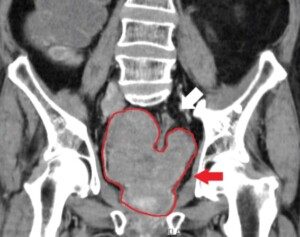The increase in extreme obesity (BMI 60+) can’t be ignored.
Super morbidly obese people have far greater health and movement problems than do the merely morbidly obese.
Over the past two decades, the number of adults in the U.S. with obesity has grown significantly, with a particularly sharp rise in the most extreme cases.
This timeline absolutely cannot be explained by “obesity genes” or some genetic origin or mutation.
Some laypeople might argue that the notable increase in extreme obesity could be due – in part but not in full – to the fat acceptance movement that has been sweeping across Instagram and TikTok for a number of years.
But certainly, there’s something else going on as well.
According to findings published in The Lancet: Diabetes & Endocrinology (2025), researchers at Pennington Biomedical have tracked this increase using national health data from 2001 to 2023.
They report that while general obesity (body mass index of 30-59) rose by nearly 30%, the number of adults with a BMI of 60+ surged by 210%.
A BMI of 62, for example, would be a woman who’s 5’4 and weighs 375.
Dr. Philip Schauer, director of the Metamor Institute at Pennington Biomedical, explains in the paper that most public attention has focused on less extreme cases such as the more socially acceptable “small fat.”
But even someone who’s “large fat” might still have a BMI under 60.
A 5’7 woman who’s 350 pounds would have a BMI of about 55, and according to the paper, she wouldn’t have an “extreme” case of obesity, but would still be considered by average people as being on the large end of the fatness continuum.
Super Fat and Infinifat

This woman is infinifat.
The fat acceptance movement has come up with terms referring to degree of fatness.
Super fat and infinifat are at the heaviest end of the continuum; certainly a BMI over 60.
Now, a 5’4 woman who weighs 420 would have a BMI of 72.
People with BMIs of 60+ face much more severe health problems yet are often left out of public discussions and health planning.
They typically experience higher rates of illness, significant physical limitations and increased medical expenses when compared to the more common presentation of “morbid obesity.”
More Perspective on the Numbers
Someone with a BMI of 30 is usually 30 to 40 pounds over a healthy weight.
A person with a BMI of 60 or over is more than 200 pounds overweight.
For instance, with the 5’4 woman who’s 375 and has a BMI of 62, she’s more than 200 pounds overweight.
Subtract 200 from 375; you get 175 – which is overweight for her height by about 40 pounds.
The weight that correlates to a BMI of over 60 causes these individuals to often have difficulty moving or conducting daily tasks that most people take for granted.
• They get winded simply exiting a chair in one room and walking to another room.
• They must pause to rest and need the railing while walking up a staircase.
• Getting in and out of vehicles is laborious.
• They can be so heavy that simple housework is avoided.
• Stepping in and out of shower stalls is painful and difficult.
Many require motorized scooters to get around and are frequently hospitalized due to serious health complications.
Many are unable to work because of their weight.
Extreme Obesity Rising Along with Use of GLP-1 Drugs
While GLP-1 treatments have shown promise for moderate obesity, their effectiveness in patients with the highest BMIs remains uncertain.
Clinical trials for these drugs often include participants with BMIs closer to 37 or 38 on average.
An estimated 850,000 people in the U.S. have extreme obesity.
Many patients with BMIs over 60 exceed the weight limits of standard medical equipment, making it more difficult to conduct routine tests like imaging scans or to perform surgeries safely such as a total knee replacement.
Anesthesia, for example, becomes riskier, and the need for special equipment and protocols increases healthcare costs and logistical challenges.
These complications make it harder to provide basic medical care.
How the Investigation Was Done
The study used weight and height data gathered from the National Health and Nutrition Examination Survey (NHANES), a long-standing program that collects health information from U.S. residents.
The team reviewed information from non-pregnant women 18 and older, examining changes in intervals of four years from 2001 to 2023.
While the rate of all obesity cases increased by 29.5%, the proportion of people with normal weight and those who are simply overweight (BMI between 25.0 and 29.9) both dropped over the same time period.
 Lorra Garrick is a former personal trainer certified by the American Council on Exercise. At Bally Total Fitness, where she was also a group fitness instructor, she trained clients of all ages and abilities for fat loss and maintaining it, muscle and strength building, fitness, and improved cardiovascular and overall health.
Lorra Garrick is a former personal trainer certified by the American Council on Exercise. At Bally Total Fitness, where she was also a group fitness instructor, she trained clients of all ages and abilities for fat loss and maintaining it, muscle and strength building, fitness, and improved cardiovascular and overall health.
.



























